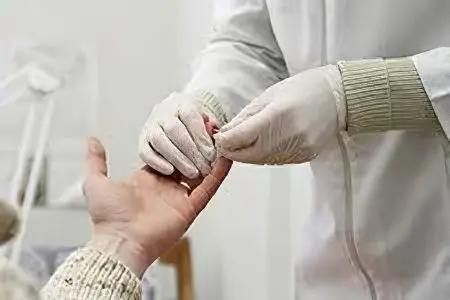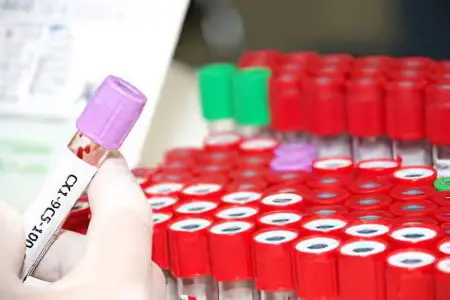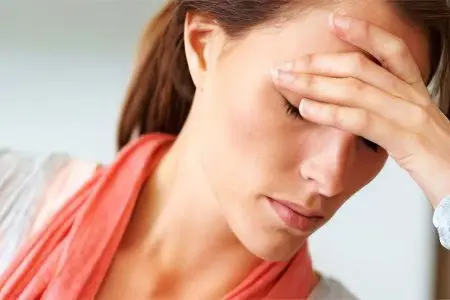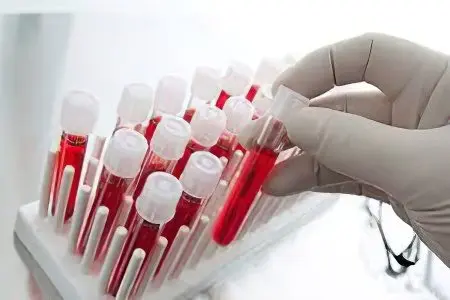Contents
Hemoglobin is the main component of red blood cells and is responsible for carrying oxygen from the lungs to the tissues. The concentration of this element is considered one of the most important biochemical indicators of blood. Depending on how high or low the level of hemoglobin in a woman is, one can judge the causes of internal trouble in her body.
What is the normal level of hemoglobin in women?

The content of hemoglobin is determined by a general blood test. Its normal value in women varies from 120 to 140 g / l. A higher rate can be observed in professional athletes (up to 160 g / l) or in smoking ladies (up to 150 g / l). In such cases, a small deviation is considered as a variant of the norm.
According to a separate scale, doctors evaluate the level of hemoglobin in the blood of pregnant women. The lower limit of the norm in the I and III trimester of pregnancy is 110 g / l, in the II – 105 g / l. The upper value throughout the entire period of expectation of the child should not exceed 120 g / l.
The significant difference in normal parameters in pregnant and non-pregnant women is explained by the physiological changes that occur in the body of the expectant mother. During gestation, the volume of circulating blood increases by 50%, so it becomes increasingly difficult for the bone marrow to supply hemoglobin in sufficient quantities. In addition, additional iron consumption is required for the formation of the placenta and the growing embryo.
Group | Hemoglobin rate |
Average level for all women | from 120 to 140 g/l |
smoking women | up to 150 g/l |
Women involved in sports | up to 160 g/l |
Pregnant women in the XNUMXst and XNUMXrd trimester | 110 g / l |
Pregnant women in the second trimester | 105 g / l |
Increased hemoglobin in women
The reasons for the increase in hemoglobin in women can be both physiological and pathological. The former include intense physical activity and prolonged exposure to hypoxia (for example, living in a high mountainous area). At the same time, the body begins to experience an acute lack of oxygen, which it compensates for by the “overproduction” of red blood cells. Such deviations from the norm, as a rule, are always insignificant – within 10-20 g / l. They do not alarm doctors and do not require medical intervention.
The situation is much more serious if hemoglobin rises for no apparent reason. This can be a sign of dangerous pathologies, in particular heart disease, diabetes mellitus, intestinal obstruction or cardiopulmonary insufficiency.
The most dangerous is when the hemoglobin concentration reaches 180-190 g/l. At the same time, an increase in blood viscosity is observed, microcirculation processes are disrupted, and oxygen delivery to organs is hampered. Such patients are diagnosed with blue fingertips and toes, fatigue, loss of appetite, absent-mindedness and irritability.
Prolonged circulatory disorders lead to the development of thromboembolism (blockage of blood vessels). Therefore, an excessively high level of hemoglobin is a condition that requires immediate treatment.
How to lower hemoglobin in women?

To reduce hemoglobin, the following measures can be used:
Diet therapy. The patient is asked not to abuse foods high in iron: red meat, animal by-products (liver, kidneys, etc.). The consumption of foods that increase cholesterol levels and blood viscosity (butter, pork, caviar, confectionery) is limited. The diet is recommended to be filled with protein foods: legumes, white meat, fish. Fast food, carbonated drinks, canned food and semi-finished products are completely excluded. Also, during the period of treatment, it is forbidden to take vitamin-mineral complexes containing Vit. B12, folic acid and iron.
reception antiplatelet agents. These drugs thin the blood and reduce the risk of blood clots. However, you should not use them yourself without the appointment of a specialist – you can harm your health. The reasonableness of the use of antiplatelet agents should be consulted with your doctor.
Search for the underlying disease. An increase in hemoglobin indicates a malfunction in the body. To identify the cause of the problem, the doctor must prescribe a comprehensive medical examination.
Low hemoglobin in women

A condition in which hemoglobin drops below normal is called iron deficiency anemia (or anemia). An experienced doctor is able to detect pathology even before passing laboratory tests, barely looking at the patient who turned to him. Pale face, dry skin, “seizures” in the corners of the mouth, dull hair and sluggish movements are the main symptoms of low hemoglobin. And if, in addition to this, a woman complains of increased fatigue, “flies” in her eyes and frequent dizziness, then the diagnosis does not raise any doubts at all.
In pregnant women, anemia is often accompanied by eating and smell disorders. The desire to eat chalk, coal, sand, sniff whitewash or gasoline is by no means a “cute whim” of a future mother, but a reason to see a doctor.
The danger of anemia lies in the insufficient supply of oxygen to the tissues. At the initial stages of the disease, the body tries to cope with the lack of a vital element, depriving it of the least significant organs from its point of view (hair, nails, teeth). However, over time, oxygen deficiency increases and everyone has to “starve”, including the brain and heart. In order to prevent serious complications, it is important to identify and eliminate the cause of the disease at an early stage of its development.
Causes of low hemoglobin in women
Anemia can be caused by:
Incorrect food. In order for hemoglobin to be synthesized in the right amount, a sufficient amount of iron must be supplied to the woman’s body with food. Its main source is animal products: meat, liver, kidneys. Plants also contain iron, but in a form that is absorbed much worse. This is why vegetarianism and low-meat diets are one of the most common causes of anemia. Excess consumption of foods that inhibit iron absorption can also lead to a decrease in hemoglobin: coffee, tea, chocolate, cereals.
Folic acid deficiency, vit. C or vit. B12 in the body. All these elements play an important role in the formation of hemoglobin. Deficiency of vit. B12 is most often caused by helminthic invasion, and a lack of vit. C and folic acid – an unbalanced nutritious diet.
Loss of blood. They can be both obvious (with systematic donation, heavy prolonged menstruation, uterine bleeding), and hidden (blood loss associated with hemorrhoids, ulcerative lesions of the digestive tract, polyps in the large intestine, etc.).
Hypothyroidism. Thyroid hormone – thyroxine – regulates the absorption of iron in the intestine. Its deficiency entails a lack of hemoglobin.
Diseases of the digestive system. Gastritis, ulcerative lesions of the stomach or intestines lead to thinning of the mucous membrane of the digestive tract, as a result of which iron practically ceases to be absorbed.
Premature death of red blood cells. This condition can be caused by long-term infectious diseases (hepatitis, tuberculosis, etc.) or immune disorders (eg, lupus erythematosus, rheumatoid arthritis).
Sedentary lifestyle. Physical activity is one of the factors affecting the synthesis of red blood cells. If the blood is not accelerated intensively enough throughout the body, the brain receives signals that there are “enough” erythrocytes and their additional synthesis is not required.
Stress. They can cause a decrease in appetite and, as a result, insufficient intake of iron from food.
What to do if the hemoglobin is 60-80 in a woman?

A hemoglobin level below 80 g/l is considered severe anemia. Correction of the state is carried out taking into account the factor that caused it. To find out the cause of the pathology, a woman is asked to take a series of tests and go through specialists: a gynecologist, a gastroenterologist, an endocrinologist, a nutritionist. After identifying the underlying disease, the patient is selected a set of therapeutic measures aimed at combating it.
Proper nutrition is definitely recommended. The daily diet of a woman should include foods rich in iron and vitamins.
These include:
beef, lamb, white rabbit meat,
liver, tongue, kidneys,
egg yolk,
dried apricots, raisins, prunes, figs,
apple and pomegranate juice,
buckwheat soups and cereals,
beans,
sprouted grains of wheat,
rosehip decoction,
plums, green apples,
almonds and walnuts.
The body itself is able to regulate the amount of iron absorbed from food – with a shortage, it increases and vice versa.
It is very useful for low hemoglobin to drink plenty of water. Doctors advise taking plain water and juices 1/4 cup every 30 minutes.
1nd breakfast | Millet porridge with dried apricots, prunes and nuts, 1 tbsp. apple juice, wheat bread. |
2nd breakfast | White bread sandwich with cheese, 1 tbsp. rosehip decoction. |
Dinner | Fresh vegetable salad with pieces of meat, vegetable soup on beef broth, dried fruit compote. |
Afternoon snack | Fruit or fruit and berry salad, croutons, fresh carrot juice |
Dinner | Salad with green peas, buckwheat porridge with beef ribs, tea |
At night | It is permissible to drink a glass of kefir (but no more, dairy products inhibit the absorption of iron). |
Diet alone does not eliminate anemia, but serves as a necessary condition for ensuring the physiological needs of the body. In addition to nutrition, taking iron supplements helps to compensate for hemoglobin deficiency. They are available in the form of capsules, tablets, syrups, drops and injections. What dosage form and in what dose to take, the doctor decides, guided by the patient’s well-being.
As a rule, vitamin C and folic acid are prescribed in addition to iron-containing products. The drug course of treatment can last from 1 to 3 months. The effectiveness of the therapy is monitored by the results of biochemical blood tests.
Do not take calcium supplements, antacids and tetracycline antibiotics at the same time as iron. These drugs reduce its absorption in the intestine. Between doses of antagonist drugs, it is necessary to observe a time interval of at least 2 hours.
Of no small importance for patients with anemia are walks in the fresh air. The constant presence in the room exacerbates oxygen starvation and leads to the fact that the body actually begins to “suffocate”. Long promenades help patients improve their well-being, strengthen the nervous system and get rid of insomnia.









